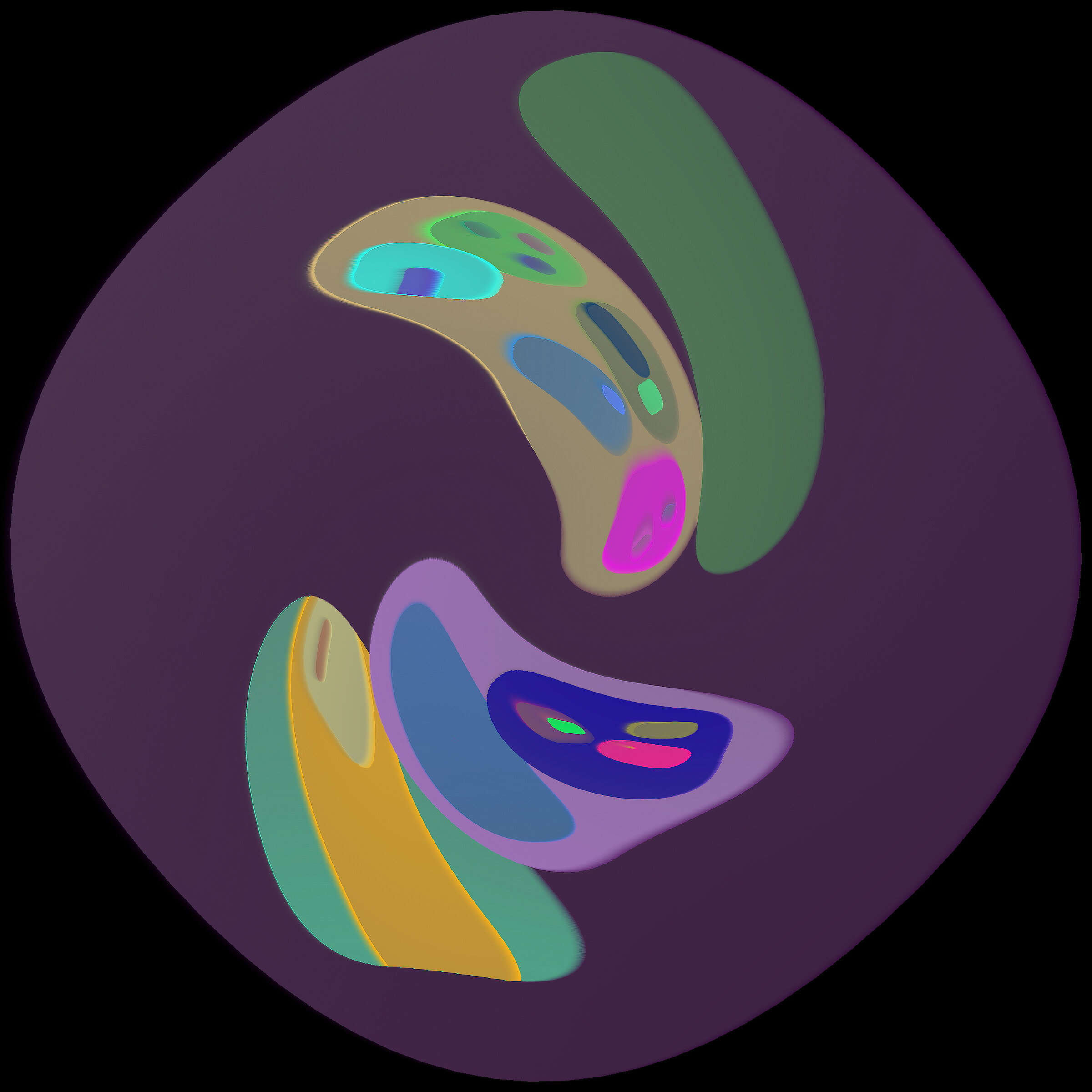Harm van den Dorpel

Harm van den Dorpel, Markov’s Dream, 2022
Keta
out of a series of 32 generative animations
Minted as ERC-721 NFT, on EIZO square screen
Courtesy the artist & Upstream Gallery, Amsterdam
Harm van den Dorpel is interested in his work as an artist in emerging aesthetics, languages, and technologies. This includes various digital practices such as programming and the use of algorithms, coding, websites, and software, as well as interfaces between genetics and technology, and blockchain. He sees an exhibition space as just one of the places where his works can take place — they are usually not dependent on his presence and can also take place in the internet.
The series Markov’s Dream (2022) consists of a total of 32 different generative animations whose programming makes them permanently change shape without any repetition of any sequences. The title refers to Andrei Markov, a mathematician who was interested in coincidences. In the jargon of probability theory, a mathematical object that is defined by a series of chance variables is known as a “stochastic process.” Markov was interested in how much it is possible to know about such a stochastic process and his research led to a model that is known today as the Markov process, sometimes also called the Markov chain. The Markov process studies the condition of a system at a certain point in time and attempts to predict the next condition of this system on the basis of existing relations within in. It is important that the Markov process ignores earlier conditions — only the present condition is of interest and therefore Markov Processes are often said to have no memory, as they only study the present.
The animations in the series Markov’s Dream are equally without memory. They continually move without ever having any determined ending and without drawing on previous movements that might establish a pattern. The programming permits only the stipulation of basic structures or color patterns. All of these animations have similar structures, with most of their forms round and organic, often looking like cells or the nuclei of cells. They are all framed by a square surface with rounded corners. Every token within the series has its own title, while as a group they make various references to contemporary culture. In the exhibition four animations are shown, referring as in the work’s title to Keta (a slang word for the drug ketamine), Softenon (a label under which the substance thalidomide is sold as a sleeping pill), Hedphelym (a song title from Ambient Works by the electronica star Aphex Twin), and Orb (a word for ghostly specks on photos, which is also used in esoteric contexts). This selection of four NFTs for the exhibition shows how the artist is interested in certain conditions that may change our view of the world. These technically produced images lead their own lives — something we are far more used to in natural systems.
Markov’s Dream, 2022
Softenon (II); Hedphelym; Orb; Keta
Four out of a series of 32 generative animations
Minted as ERC-721 NFT, on EIZO square screen
Courtesy the artist & Collection Hammerline; Collection Abosch; Collection Frans van Akkerveeken; Upstream Gallery, Amsterdam
Harm van den Dorpel
is an artist dedicated to discovering emergent aesthetics by composing software and language, borrowing from disparate fields such as genetics and blockchain. Also, he co-founded the now closed left gallery. His work has been included in the exhibition Free at the New Museum in New York and in the survey exhibition Post-Internet Art at the Ullens Center for Contemporary Art. His works were recently shown at Takuro Someya Contemporary Art in Tokyo; Nahmad Contemporary (NY); — curated by Eleanor Cayre & Dean Kissick, Villa Schöningen, Potsdam and Galerie Rüdiger Schöttle. He’s represented by Upstream Gallery, Amsterdam; and Galerie Rüdiger Schöttle, Munich.